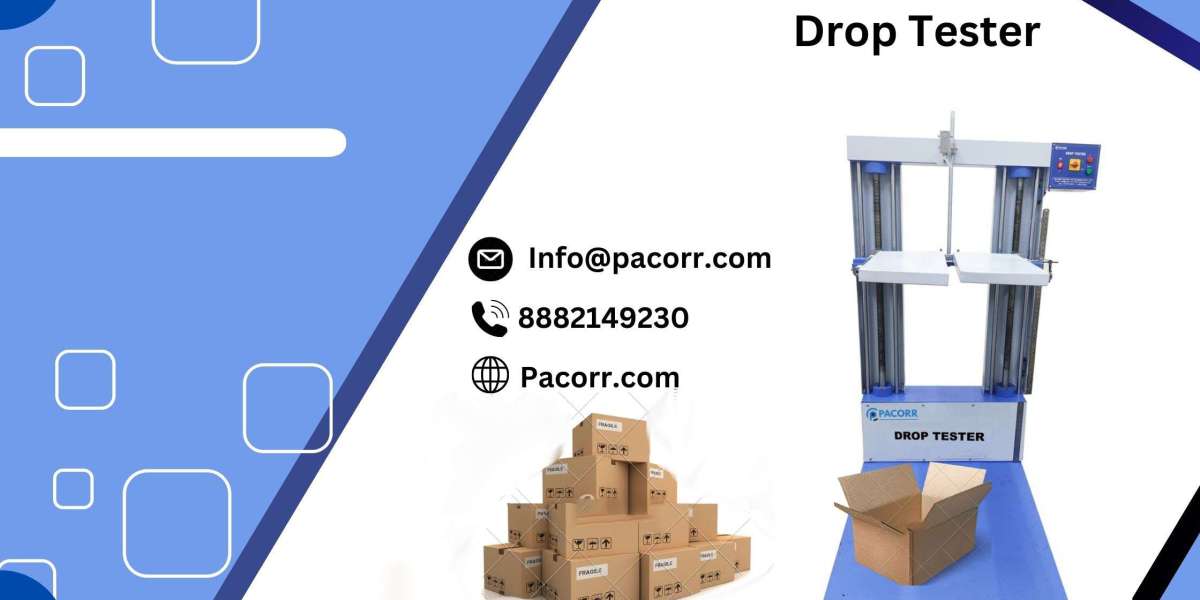What is a Drop Tester?
A Drop Testing is a device used to evaluate the durability and performance of a product or packaging by simulating the impacts it might experience during handling, transportation, or accidental drops. By dropping the item from a predetermined height, the tester assesses its ability to withstand such forces without damage.
How Does a Drop Tester Work?
Drop Tester operate on a straightforward principle: replicating the forces an item might encounter during a fall. Here's a step-by-step overview of the process:
· Setup: The item to be tested is placed on the drop tester platform. The height from which the item will be dropped is set according to the test requirements.
· Drop: The tester releases the item, allowing it to free-fall to the ground or onto a specific surface designed to mimic real-world conditions.
· Impact Analysis: Sensors and high-speed cameras capture data on the impact, including force, acceleration, and deformation.
· Evaluation: The collected data is analysed to determine the item's durability and identify any potential failure points.
Types of Drop Tester
Several types of Drop Tester are designed for specific testing needs:
1. Free-Fall Drop Tester: Drop the item from a set height without additional forces acting on it, simulating a natural fall.
2. Rotational Drop Tester: Used for items that might experience rotational forces during a fall, such as electronics and appliances.
3. Edge and Corner Drop Tester: Focus on dropping items on their edges or corners to evaluate the strength and durability of packaging.
4. Inclined Impact Testers: Simulate impacts from oblique angles, useful for products that might experience such forces during shipping.
Applications of Drop Tester
Drop Tester are employed across various industries to ensure the quality and durability of products:
1. Electronics: Ensuring smartphones, tablets, and other devices can withstand accidental drops.
2. Packaging: Verifying that packaging materials can protect contents during transportation and handling.
3. Consumer Goods: Testing the durability of items such as toys, kitchenware, and home appliances.
4. Automotive: Evaluating the impact resistance of car components and accessories.
5. Medical Devices: Ensuring the integrity of medical equipment and packaging to prevent contamination and damage.
Benefits of Using Drop Tester
Quality Assurance: Drop Testing ensures that products meet quality standards and can withstand real-world conditions.
· Cost Savings: Identifying potential weaknesses early in the design process can prevent costly recalls and redesigns.
· Customer Satisfaction: Durable products lead to fewer customer complaints and returns, enhancing brand reputation.
Compliance: Drop testing helps manufacturers comply with industry regulations and standards.
Choosing the Right Drop Tester
When selecting a Drop Testing, consider the following factors:
1. Test Requirements: Identify the specific needs of your product, including the type of impacts it might encounter.
2. Data Analysis: Look for testers with advanced data collection and analysis capabilities to get detailed insights.
3. Durability and Reliability: Ensure the tester itself is robust and reliable, offering consistent performance over time.
4. Ease of Use: User-friendly interfaces and automated features can streamline the testing process.
FAQ about Drop Tester
Q1: What industries benefit most from drop testing?
A1: Drop Tester is crucial for industries such as electronics, packaging, consumer goods, automotive, and medical devices, where product durability and quality are paramount.
Q2: How do I determine the appropriate drop height for testing?
A2: The drop height depends on the intended use and handling scenarios of the product. Standards and regulations often provide guidelines for specific products.
Q3: Can Drop Tester handle large and heavy items?
A3: Yes, there are Drop Tester designed to handle various sizes and weights, ensuring accurate testing for a wide range of products.
Q4: What data is collected during a drop test?
A4: Drop tests collect data on impact force, acceleration, deformation, and sometimes visual footage to analyse the item's performance under stress.
Q5: How often should drop testing be performed?
A5: Drop testing should be performed during the product design phase, after significant design changes, and periodically during production to ensure consistent quality.
Q6: Are Drop Tester difficult to operate?
A6: Modern Drop Tester come with user-friendly interfaces and automated features, making them accessible and easy to operate for most users.
Q7: Can drop testing simulate real-world conditions accurately?
A7: Yes, Drop Tester are designed to replicate real-world impacts and handling scenarios, providing valuable insights into product durability.
Conclusion
Drop Tester are indispensable tools for manufacturers committed to producing high-quality, durable products. By simulating real-world impacts, these testers provide critical data that helps improve product design, enhance customer satisfaction, and ensure compliance with industry standards.
Whether you are in electronics, packaging, consumer goods, automotive, or medical devices, investing in a reliable drop tester is a step towards achieving excellence in product durability and quality.
For more information on Drop Tester and other testing equipment, visit Pacorr com.








